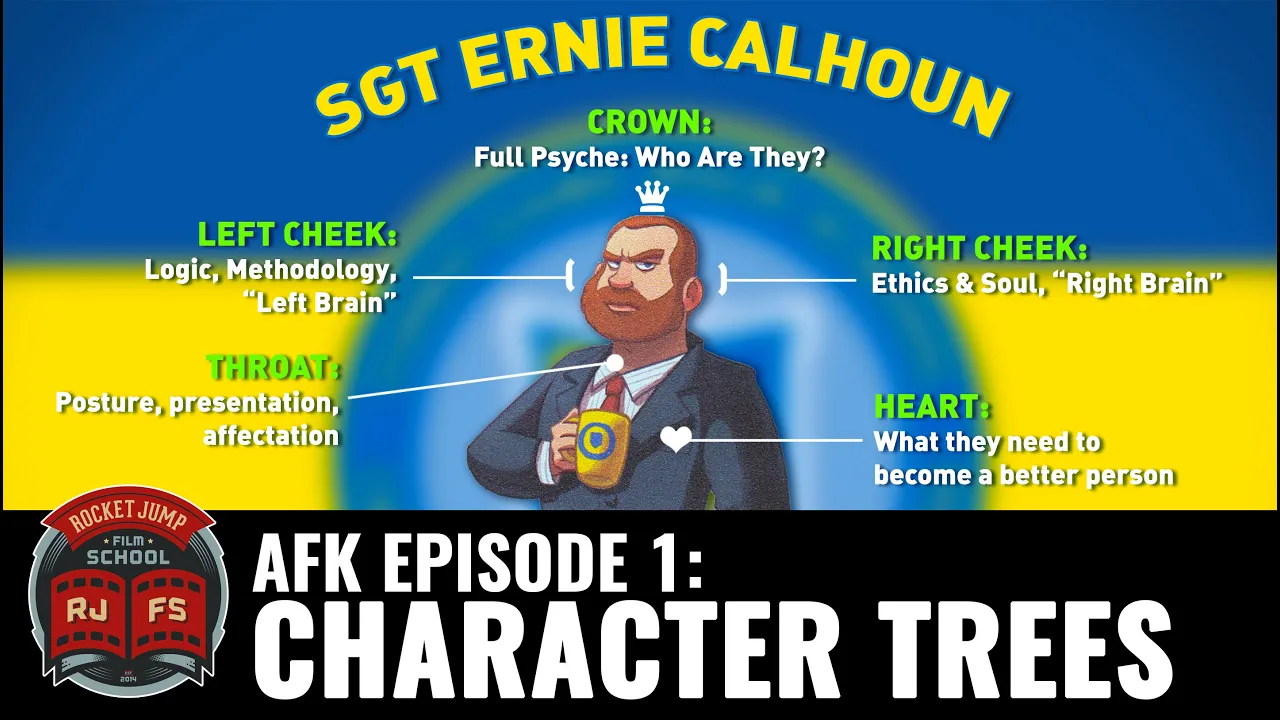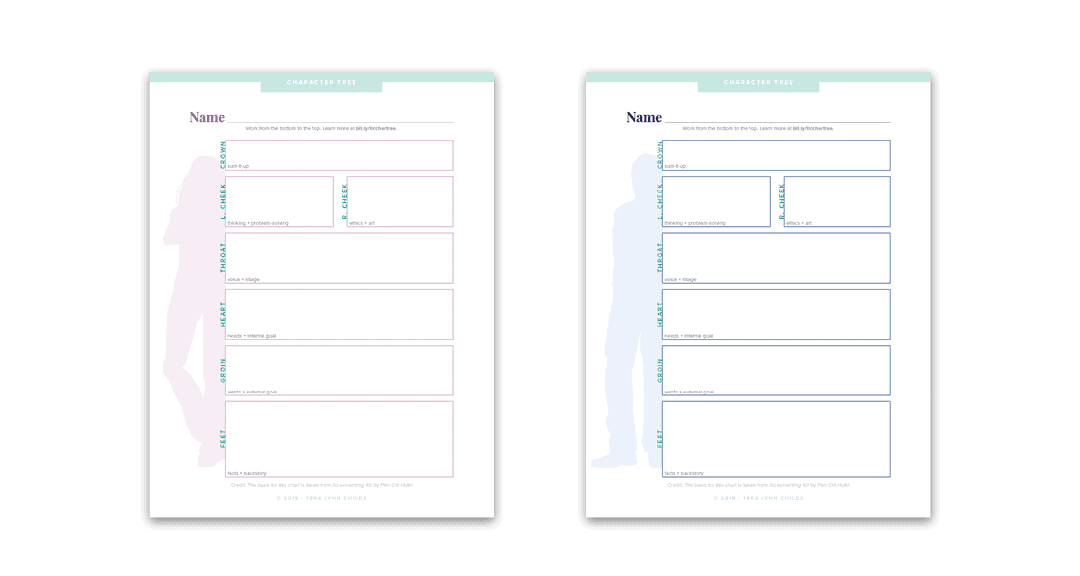Creating characters is hard. You’re basically making an entire whole person out of air, out of the thoughts in your mind. And as fun as it can be sometimes, it’s also hard.
It’s especially hard to make sure all of your characters are unique, and not just slightly different versions of each other.
I’ve tried a lot of methods in my day. Everything from super-detailed 20+ page “Character Biography” workbooks to cut-and-paste character collages to just diving in and seeing where the characters lead me.
They all work to some extent, but they are also all flawed. The character biography can force you to commit to details that you might not yet know about your character. The collages can be very superficial. And diving in without a clue can end up with your character leading you into a dead end or, worse, a contradiction.
After trying most (if not all) of the methods out there, I’ve finally settled on one that seems to work for me again and again.
It’s called the Character Tree.
And it’s about to make your character development so much easier!
First of all, the character tree uses a human body metaphor. (I know, why isn’t it called the character body instead? Who knows. I did not think up the Character Tree. It is the brilliant idea of Film Crit Hulk. Just go with it…)
Starting at the ground and working our way up, these are the things you need to know about your characters in order to make them feel like well-rounded, 360º real people.
- Feet — This is the tangible, factual stuff about your characters. What do they look like? Where do they come from? What is their personal history? You don’t have to figure out every single thing about them, but pick a few relevant and important things that may have shaped your character.
- Groin — This is what your character wants. It’s probably something they think they need, but that comes next. This is an external goal that your character is trying to achieve or possess. This is the thing that they think will make their lives perfect (or at least better) if they get it.
- Heart — This is what your character needs. That thing that is missing in their lives (or within themselves) that will make them whole. Often, this is an internal goal that the character doesn’t even know that they are pursuing until they achieve it (or until they either achieve or fail at their external goal).
- Throat — This is how your character projects themselves to the world, how they want the world to see them. It’s not just how they speak and dress and act, but also why. What do they want other people to think about them? What actions do they take to give that impression?
- Left Cheek — This is your character’s special intelligence. (Their left-brain, analytical abilities, if you will.) How are they smarter than other people? How do they go about solving a problem? How are they logical?
- Right Cheek — This is your character’s artistic side. What kinds of things do they think are beautiful? What qualifies as art for them? How do they express their creativity? How are they illogical?
- Crown — This is kind of a summary of the character as a whole. TBH, this one is always the hardest for me, and often I don’t fill it out at all. Maybe because I need to put the character through some challenges before I know their true essence.
Okay, so maybe that all seems like a lot of writerly jargon. Let me show you how it works with a real example from a little book you might not know, Harry Potter and the Sorcerer’s Stone.
If J.K. Rowling made a character tree for Hermione Granger, it might look like this…
- Feet — muggle-born, both parents are dentists, frizzy brown hair
- Groin — wants to succeed at Hogwarts and be the best student in her class and maybe in the history of the school
- Heart — needs to learn that some things are more important than academics and following the rules
- Throat — doesn’t care about her appearance, pretends the mudblood taunts don’t bother her, wants everyone to know how smart she is
- Left Cheek — 1000% book smart, thinks the answer to every problem can be found in the library
- Right Cheek — believes in friendship and loyalty, even if it means getting into trouble
- Crown — A brilliant know-it-all who raises her hand for every question, can figure out how to solve any riddle, and who will sacrifice her own interests in order to protect her friends
I hope that helps and that maybe you can see how, by knowing all of those things about a character, it tells you how that character might act in various situations.
If you want to read the original article about the Character Tree, check out HULK PRESENTS CHARACTER TREES! (He had a book called Screenwriting 101, but it’s not currently available for sale because he’s working on a new version. Fingers crossed it comes out soon.)
Or, if you’re more of a visual learner (raises hand) then you should watch this amazing video from RocketJump Film School. (It might make even more sense if you’ve watched Video Game High School, which you should do anyway because it’s awesome.)
Ready to create your own character trees? Wouldn’t it be handy if you had, oh, I don’t know, a character tree worksheet?!
Your wish is my command. Just click here to download the one I made for you.
If you have any questions about characters or character trees, ask them in comments and I’ll do my best to answer.
Other posts you might be interested in:



